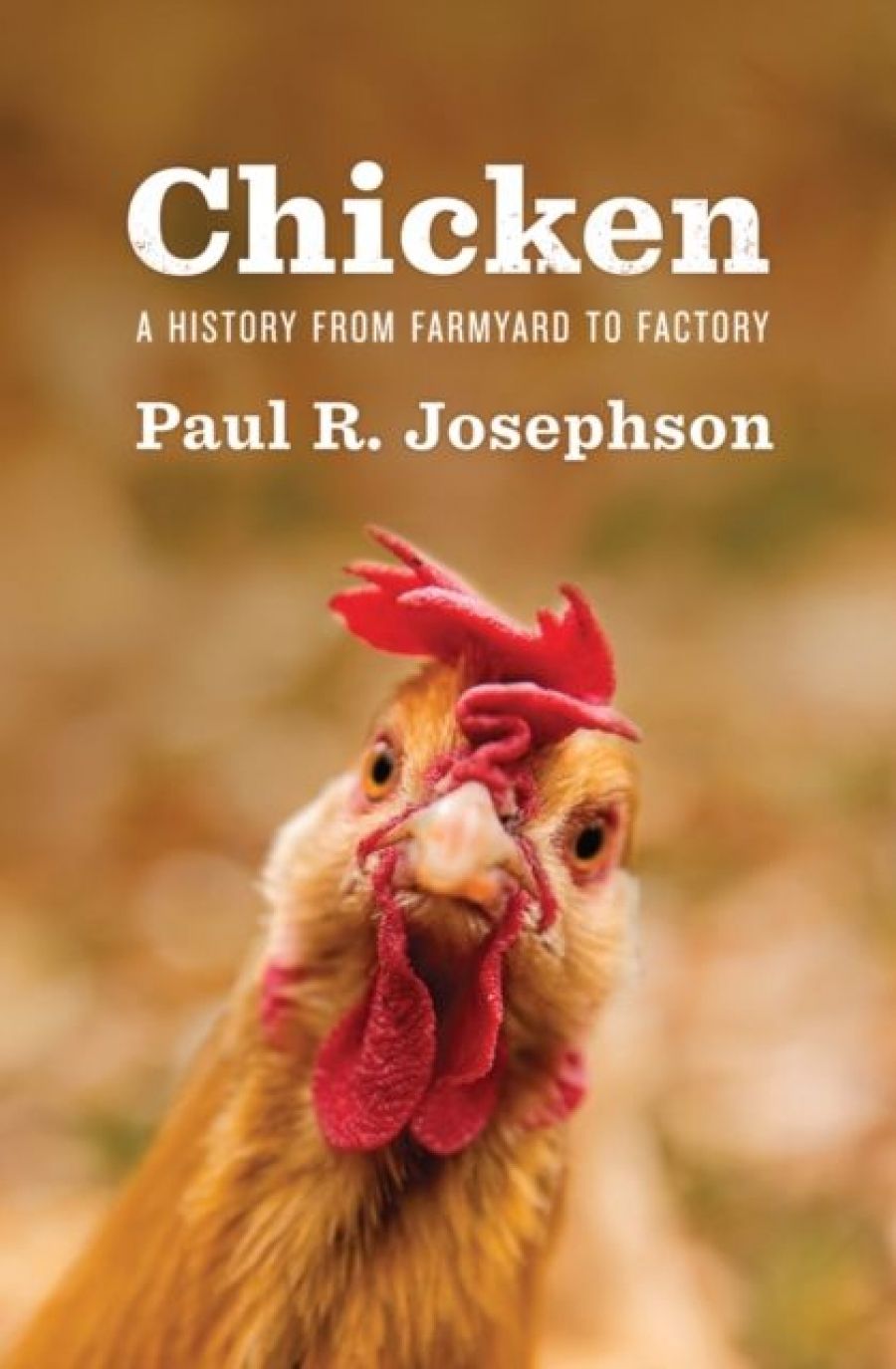
- Free Article: No
- Contents Category: History
- Review Article: Yes
- Custom Highlight Text:
Borrowing a term coined by the late Jewish Nobel Laureate and vegetarian Isaac Bashevis Singer, Charles Patterson (in)famously likened humanity’s treatment of animals to an ‘eternal Treblinka’. In his 2001 book of the same name, Patterson set the mass murder of Europe’s Jews and industrialised animal slaughter side by side, drawing a line between the production methods of Chicago’s early twentieth-century slaughterhouses, the assembly-line technology pioneered by Henry Ford – an avowed anti-Semite and Hitler supporter – and the death camps of Nazi Germany. Another Jewish writer, the German philosopher Theodor Adorno, is said to have observed that ‘Auschwitz begins whenever someone looks at a slaughterhouse and thinks: they’re only animals’.
- Book 1 Title: Chicken
- Book 1 Subtitle: A history from farmyard to factory
- Book 1 Biblio: Polity, $41.95 hb, 252 pp
- Book 1 Readings Link: booktopia.kh4ffx.net/D4zYn
By his own admission, Josephson has not been moved to adopt a vegan or even vegetarian diet by these facts. But Chicken is not, or at least not only, an animal rights screed. It is also a cultural history of gallus gallus, the red jungle fowl that originated in Southeast Asia around 8,000 years ago and evolved, through increasingly sophisticated human intervention, from a ‘religious and ritual creature into an economic one’. In sometimes dense but surprisingly humorous prose – Josephson loves a galline pun – the author charts the rise of the chicken as a monocultural ‘industrial object’ through its emergence as America’s favourite meat, packaged as wings, breasts, and that defining symbol of the modern era, the nugget, following the post-World War II supermarket boom. Worldwide, a staggering 53 billion broilers are now slaughtered annually.
Josephson doesn’t mention Australia, a small net exporter of chicken meat, but it’s worth examining our own ledger. To use a Josephsonian pun, we’re a long way down the pecking order of chicken-producing countries at 1.22 million tonnes per year (the leading country, the United States, produces more than 18 million tonnes). Yet chicken is by far our preferred meat: per capita, we rank fourth highest in the world in consumption, ahead even of the United States, a country with which we share a predilection for (artificially) cheap, white meat. No doubt the abhorrent live-export trade, in the headlines again recently after the discovery of ship crews infected with coronavirus, remains a black mark against our name, but so too should our record on meat production for the domestic market.
Despite the increasing public awareness of ‘high welfare’ meat products, around ninety-five per cent of Australian broilers – some 450 million per year – are raised and slaughtered in factory farms, the conditions in which are scarcely an improvement on their North American and European counterparts that Josephson describes. There, as here, where food animals are denied the same legal protections as pets, even the most progressive farms reflect a bare minimum of welfare. The annual factory farming of a further thirteen million layer hens completes a grim local picture made worse by the inchoate threat of US-style ‘Ag-gag’ laws designed to criminalise the exposure of animal rights abuses. While we may, with some justification, lead international criticism of Japan’s whaling industry and the live-animal trade in China, it behoves us to acknowledge that our treatment of industrially farmed animals is largely different in degree rather than in kind.
Ultimately, Josephson is a pragmatist, not a moralist. We may in the end, he believes, be swayed to curb our carnivorism more by self-interest than concern for animal welfare. As he points out, in the century since Upton Sinclair wrote his incendiary slaughterhouse exposé The Jungle, conditions for meatpacking workers – still, for the most part, poorly paid immigrants forced to work in dangerous and disgusting processing facilities – have changed little. And while Sinclair’s book, despite its author’s intentions, galvanised public sentiment less around worker’s rights than the unsanitary nature of factory-farmed meat, the risks to human health remain serious.
We know that both red and white meat are implicated in maladies ranging from obesity and erectile dysfunction to diabetes and cancer. Equally well established is the link between animals raised for food and the emergence of zoonotic diseases and, finally, pandemics. H1N1 (swine flu) and H5N1 (bird flu) evolved in pig and chicken factory farms. Covid-19, which has so far, despite a relatively low death rate, killed almost half a million people worldwide, almost certainly originated in a Chinese wet market. The next pandemic could be far worse. It’s no exaggeration to say that a complete reassessment of our ruthless commodification of chickens and other animals is not only a moral proposition but one that may be necessary for our own survival as a species.


Comments powered by CComment